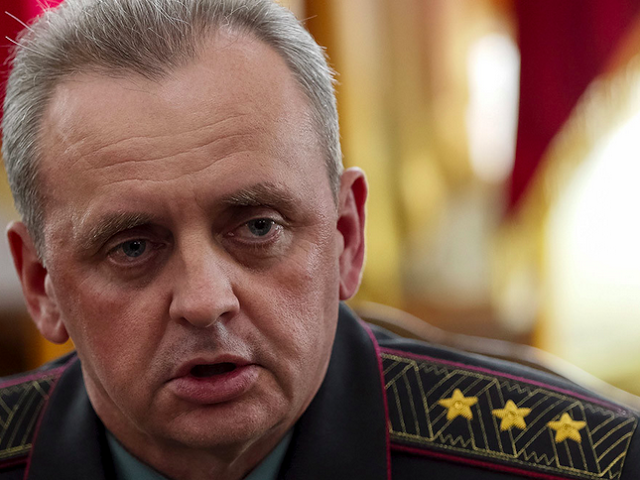This perhaps explains assertions of Ukrainian President Petro Poroshenko about the all edged "200,000 Russian soldiers" in the Donbass.
One might think that Viktor Muzhenko's declaration resembled a late admission. It took more than a year took for the head of the General Staff to designate Kiev's accusations against Russia as wrong. "There are intelligence reports and briefings data. Intelligence reports are what we get, and the data are, what the reports confirm" explained Muzhenko, in the best soldierly bureaucratic form, in an interview with the Ukrainian newspaper ZN.UA, and went on:
"Last summer 90 percent of the information through official briefings re the Anti-Terrorist Operation -- was wrong." The head of the General Staff said only five to ten percent of the information received was credible. At the same time Muzhenko accused the self-defense militias in Donbass of "active disinformation tactics."
Once the people in the east of the country had refused to recognize the new government, the situation escalated completely in the territories Donetsk and Lugansk, after Kiev had launched a military attack in April, 2014 under the guise of an anti-terrorist operation.
According to UN estimates, the conflict has already cost 6,800 people their lives and has left more than 17,000 civilians injured.
Meanwhile, Ukrainian President Petro Poroshenko responded to the information with his own figures and explained that through July this year, the conflict had claimed a total of 9,000 civilian and military victims.
Similarly also in his accusations, Russian soldiers were going to besiege the Ukrainian territory. According to Poroshenko, sometimes it was 9,000 fighters of the Russian Federation, sometimes it would be "by Putin's order 200,000 men and an arsenal of armored vehicles, sophisticated missile systems" penetrating into the Ukraine.
However, Poroshenko never provided evidence of his allegations. Also OSCE observers, who participated in the monitoring of both borders, declared on a regular basis, they could confirm neither Russian military personnel nor vehicles.
Serious allegations were forthcoming not only from Kiev, but were being fed by Washington. Despite repeated accusations towards Russia, the US government balked at presenting evidence.
Where knowledge of the Ukraine-conflict ultimately and finally came from the US, representative to NATO, Douglas Lute, admitted in May 2015. At a meeting of the Friends of Europe Forum in Brussels the politician said, "we should ask ourselves why we really know so little about what's going on in the Donbass," and added, "to be honest, I read more in social media than I get out of the formal briefings and intelligence networks."
According to some reports the reason for Lute's resorting to social media use could be the non-existence of the old intelligence networks.
Similarly, Twitter seemed a popular source of information for US Ambassador in Kiev Geoffrey Pyatt. So he clutched at a two-year-old image of a antiaircraft system -- at an air show near Moscow! -- as alleged photographic evidence for the existence of Russian troops in Ukraine.
Translator comment: Earlier this year, February 5, US Secretary of State John Kerry, when pressed for evidence of Russian involvement, advised getting confirmation from social media!
Translated from German by Tom Winter
Source: RT Deutsch




Comment: Someone please inform the U.S. State Department!
Muzhenko is the guy who admitted early this year that there were no Russian troops in Ukraine:
- Ukraine chief of staff 'thwarts Western allegations' by admitting no combat with Russian troops
- Ukraine Chief of Staff acknowledges no Russian troops in Donetsk
He's also the guy that took Right Sector under the wing of the Ukrainian military.